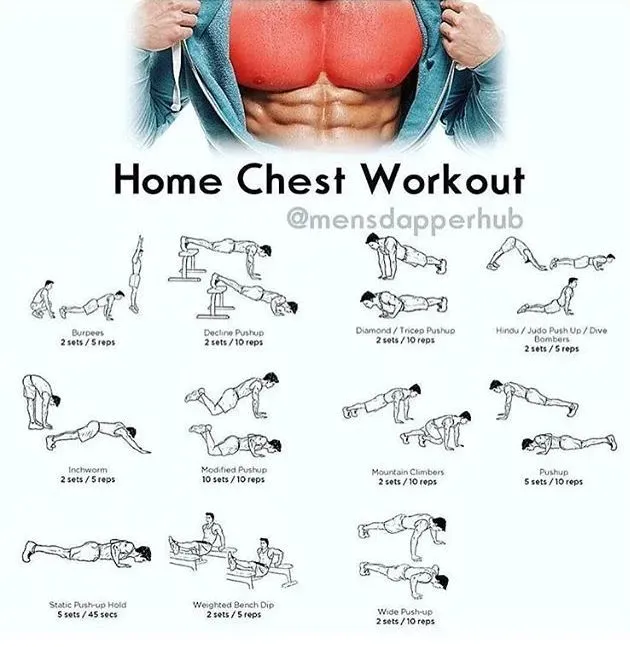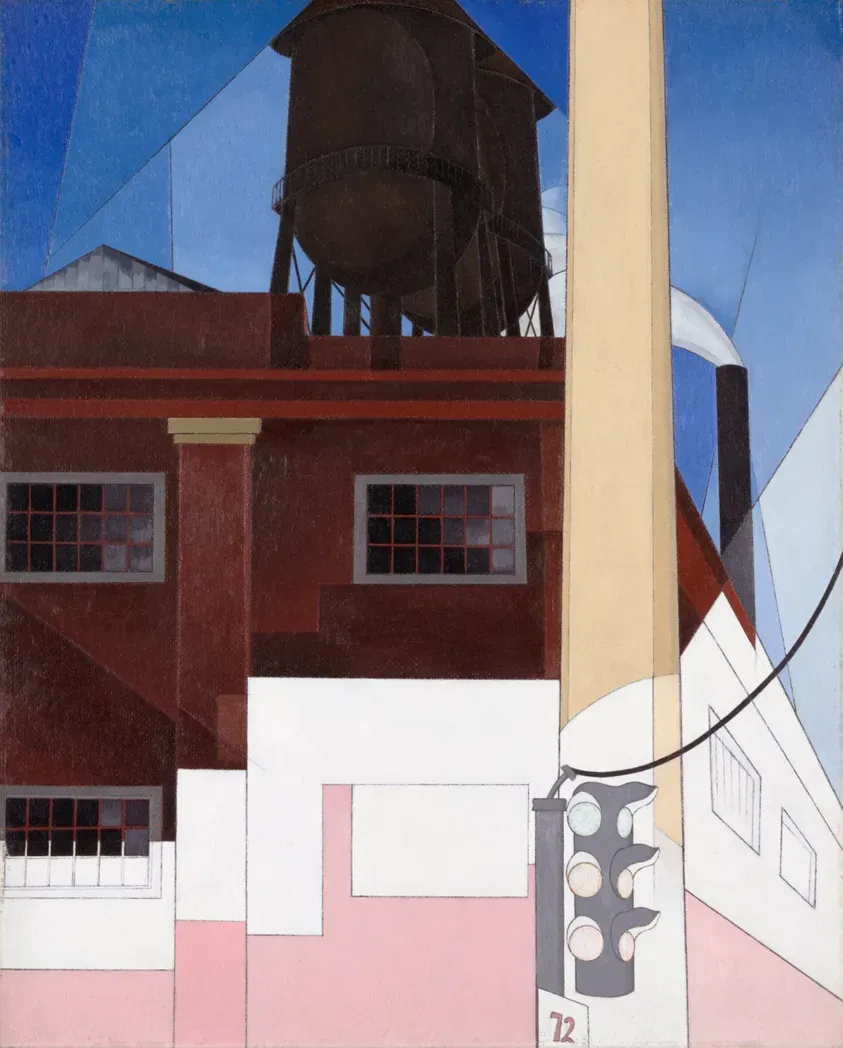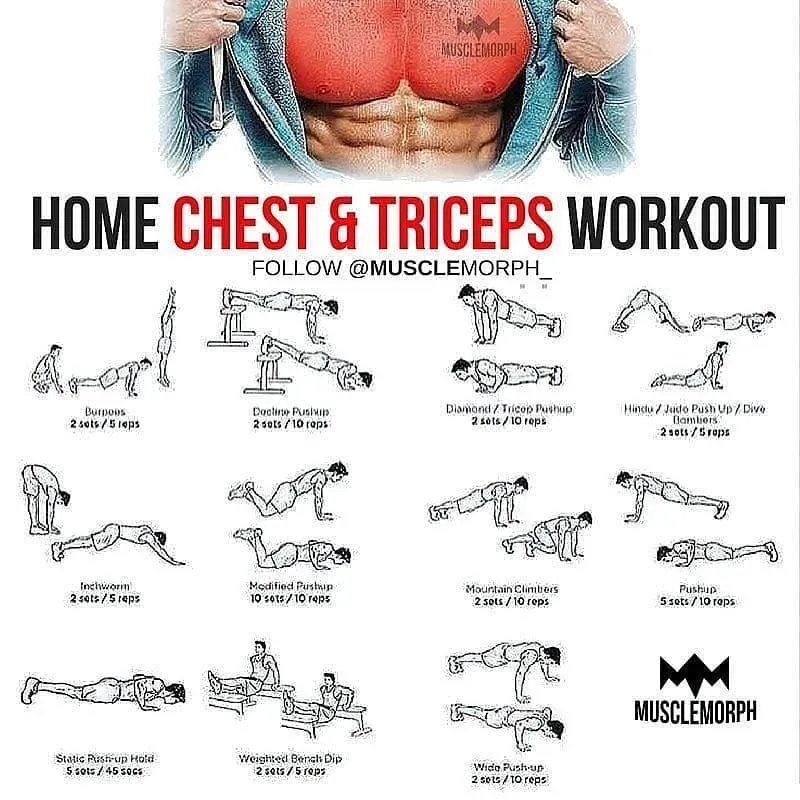Table of Contents
Thinking you need a weight rack and a spotter to build a solid chest? That's a common misconception floating around. Maybe you've tried a few push-ups, felt a slight burn, and figured home workouts just don't cut it for serious chest development. Or perhaps you're stuck wondering how to actually structure a workout that targets everything from your upper pecs to your lower fibers without stepping foot in a gym. Crafting an effective chest workout at home routine might seem daunting, but it's entirely achievable with the right approach and a bit of know-how.
Why Your Chest Muscles Deserve Attention

Why Your Chest Muscles Deserve Attention
Beyond Just Aesthetics
Look, everyone wants a chest that fills out a shirt. There's no shame in that. But thinking your chest muscles are just for show is like saying your car's engine is only for making noise. The pectoralis major and minor muscles, sitting right there on your front, are workhorses. They're primarily responsible for pushing movements – think pushing a heavy door open, pushing yourself up off the floor, or even just pushing a grocery cart. Neglect them, and you'll find simple daily tasks feel harder than they should.
These muscles also play a crucial role in rotating your arm inwards and bringing it across your body. Ever tried to hug someone, throw a ball, or even just reach for something on a high shelf? Your chest muscles are involved. They don't operate in a vacuum; they work in concert with your shoulders, triceps, and back muscles for coordinated upper body movement. Ignoring your chest means you're leaving a significant amount of functional strength and stability on the table.
Core of Upper Body Strength
A strong chest forms a critical part of your upper body's foundation. Think about exercises like push-ups or bench presses. While they hit your chest hard, they also engage your shoulders and triceps significantly. A weak chest limits your potential in these compound movements, which are vital for overall strength development. It's like trying to build a house on shaky ground; the rest of the structure suffers.
Furthermore, well-developed chest muscles contribute to better posture. They help counteract the rounded-shoulder posture that many people develop from sitting at computers all day. Strengthening your chest can help pull your shoulders back and improve your alignment, which not only looks better but can also reduce strain on your upper back and neck. It's not just about moving weight; it's about moving well and standing tall.
Here's a quick rundown of what your chest muscles actually help you do:
- Push objects away from your body
- Lift items overhead (with shoulder assistance)
- Bring your arms across your body
- Rotate your arms inward
- Stabilize your shoulder joint
- Improve overall upper body posture
Chest Workout At Home Routine: Bodyweight Essentials

Chest Workout At Home Routine: Bodyweight Essentials
Starting Your Chest Workout At Home Routine Strong
Alright, let's talk brass tacks for your using just your body weight. Forget those fancy machines for a minute. Your own body provides plenty of resistance to build serious muscle, assuming you know how to use it. The humble push-up is your absolute cornerstone here. It's portable, scalable, and hits the chest, shoulders, and triceps all at once. Don't dismiss it because it's basic; master the standard push-up first before trying to run a marathon.
Proper form is non-negotiable. Hands slightly wider than shoulder-width, fingers pointing forward, body in a straight line from head to heels. Lower your chest towards the floor, keeping your elbows tucked slightly (not flared out like chicken wings). Push back up powerfully. If you can't do a full push-up yet, drop to your knees. There's zero shame in starting there. The goal is controlled movement and feeling the muscles work, not flopping up and down like a fish out of water.
Targeting Different Angles with Bodyweight
Once you've got standard push-ups down, you can start manipulating the angle to hit different parts of your chest. Want to work your upper chest more? Elevate your feet by placing them on a sturdy chair or bench for decline push-ups. This shifts more of the load to the upper fibers. Conversely, elevate your hands on a stable surface (like a counter or sturdy table) for incline push-ups. This makes the exercise easier, great for beginners, and emphasizes the lower chest slightly, though the difference isn't as pronounced as decline.
You can also change your hand position. Bringing your hands closer together (diamond push-ups) puts more emphasis on the triceps, but also hammers the inner chest. Wide-grip push-ups target the outer chest more. Experiment with these variations within your chest workout at home routine to ensure you're hitting the muscle from multiple angles. It’s not about doing a hundred different things; it’s about doing a few things well and with intention.
Here are a few key bodyweight push-up variations to include:
- Standard Push-ups (Hands shoulder-width apart)
- Incline Push-ups (Hands elevated)
- Decline Push-ups (Feet elevated)
- Diamond Push-ups (Hands close together, forming a diamond shape with thumbs and index fingers)
Adding Intensity and Challenge
Think bodyweight is too easy once you can bang out 20 standard push-ups? Think again. That's when you start adding intensity. Slowing down the eccentric (lowering) phase of the push-up to 3-5 seconds creates incredible time under tension, forcing your muscles to work harder. Pausing at the bottom for a second or two also increases the difficulty and ensures you're not just bouncing off the floor.
For those looking for more explosive power, plyometric push-ups are your friend. Push up with enough force for your hands to leave the ground, maybe even clap if you're feeling froggy. Just make sure you can control the landing. Another option, if you have parallel bars or sturdy chair backs, is bodyweight dips. These are fantastic for hitting the lower chest and triceps hard. If dips aren't an option, simulating a fly motion by sliding your hands out and in on a smooth floor (wearing socks) can also target the chest differently than standard push-ups.
Leveling Up Your Chest Workout At Home with Dumbbells
Why Dumbbells Are Your Home Gym Friends
so you've mastered bodyweight push-ups and their variations. You're feeling stronger, but maybe you're hitting a plateau, or you just want to add external resistance to really challenge those pec fibers. This is where dumbbells come in. They don't take up much space, they're relatively affordable, and they open up a whole new world of exercises for your . Unlike a barbell, dumbbells allow for a greater range of motion and can help address potential strength imbalances between your left and right sides.
Think of dumbbells as your portable gym. You can use them lying on the floor, on a bench (if you have one, but the floor works fine), or even standing up for certain movements. The key is controlled movement through the full range of motion. Don't just heave the weights around; focus on squeezing your chest muscles at the top of each rep and controlling the descent. It's not about lifting the heaviest weight possible right away; it's about building a strong mind-muscle connection.
Essential Dumbbell Chest Exercises
The cornerstone of any dumbbell chest routine is the dumbbell chest press. Lie on your back (floor or bench), hold a dumbbell in each hand at chest level, palms facing each other or slightly angled. Press the weights straight up towards the ceiling, squeezing your chest at the top. Lower them back down slowly and under control until your elbows are slightly below your shoulders (or as far as your mobility allows without pain). This hits the bulk of your pec muscle.
Adding dumbbell flyes complements the pressing motion by working the adduction function of the chest (bringing your arms together across your body). Lie on your back, arms extended above your chest, slight bend in the elbows. Lower the dumbbells out to the sides in an arc, like you're hugging a giant tree, until you feel a stretch in your chest. Bring them back up to the starting position using your chest muscles, maintaining that slight elbow bend. This exercise really isolates the chest and gives you a fantastic stretch at the bottom.
Ready to add some iron? Here are two fundamental dumbbell chest exercises:
- Dumbbell Chest Press (Targets overall chest strength)
- Dumbbell Flyes (Focuses on chest isolation and stretch)
Crafting Your Complete Chest Workout At Home Routine

Crafting Your Complete Chest Workout At Home Routine
Putting the Pieces Together for Your Chest Workout At Home Routine
so you've got the foundational bodyweight moves and maybe added some dumbbell exercises to your arsenal. Now, how do you actually build a structured that gets results and isn't just a random collection of exercises? It’s not rocket science, but it does require a bit of planning. Think of it like building a wall; you need a pattern, not just a pile of bricks. You'll want to select 3-5 exercises per workout, mixing pressing movements (like push-ups or presses) with fly motions if you have dumbbells. Aim for 3-4 sets per exercise, and for muscle growth (hypertrophy), shoot for reps in the 8-15 range. If you're focusing purely on strength, lower reps (4-6) with higher intensity (harder variations or heavier weights) are the ticket. Rest for 60-90 seconds between sets. Don't just guess; write it down or use an app to track your sets, reps, and the exercises you did.
Frequency matters too. Hitting your chest hard 7 days a week isn't smart; muscles grow when they recover. For most people training at home, 2-3 chest workouts per week is plenty. Make sure you space them out, allowing at least 48 hours between sessions. For example, Tuesday and Friday. This gives your muscles time to repair and get stronger. Listen to your body; if you're still super sore from Tuesday's session on Friday, maybe push it to Saturday. Overtraining won't make your chest grow faster; it'll just lead to burnout or injury.
Consistency and Progression: The Real Muscle Builders
The best in the world is useless if you don't stick to it. Consistency trumps intensity every single time, especially when you're training outside of a traditional gym environment. Find a time that works for you and commit to it. Maybe it's first thing in the morning before the chaos starts, or maybe it's in the evening once the kids are in bed. Whatever it is, make it a non-negotiable appointment in your day.
Once you can comfortably hit the upper end of your rep range (say, 15 reps) for all sets of a particular exercise, it's time to make it harder. This is called progressive overload. How do you do this at home? Several ways: switch to a more difficult variation (from knee push-ups to standard, or standard to decline), increase the number of reps, increase the number of sets, decrease the rest time between sets, or add resistance (use heavier dumbbells, wear a weighted backpack for push-ups, or use resistance bands if you have them). Stagnation is the enemy of progress. Always aim to do a little bit more than you did last time, safely and with good form.
How will you make sure you're progressing?
- Track your workouts: Note exercises, sets, reps, and resistance used.
- Increase reps: Add 1-2 reps when the current rep range feels easy.
- Add sets: Go from 3 sets to 4 sets per exercise.
- Shorten rest periods: Cut down rest time by 15-30 seconds.
- Use harder variations: Move to decline push-ups from standard, for example.
- Add resistance: Use heavier dumbbells, a weighted vest, or bands.
Warm-Up, Cool-Down, and Listening to Your Body
Before you dive into your , spend 5-10 minutes warming up. This isn't optional; it's essential to prepare your muscles and joints for the work ahead and reduce the risk of injury. Light cardio like jogging in place, jumping jacks, or dynamic stretches focusing on your shoulders and chest (arm circles, chest stretches against a wall) will get the blood flowing. Don't skip this part in your eagerness to get to the main event.
After you've finished your last set, take a few minutes to cool down and stretch. Static stretches for your chest, shoulders, and triceps held for 20-30 seconds each can help improve flexibility and reduce post-workout soreness. Again, don't just collapse on the floor. This cool-down phase is part of the overall workout process. Most importantly, pay attention to what your body is telling you. There’s a difference between muscle fatigue and sharp, joint pain. If something feels wrong, stop. Pushing through pain is foolish, not tough. Rest, recover, and live to lift another day.
Making Your Home Chest Routine Stick
Building a strong chest without a gym membership isn't rocket science, but it does require consistency and attention to how your body moves. We've covered the basics of why these muscles matter, explored effective bodyweight options, and looked at how adding some dumbbells can increase the challenge. The key takeaway here isn't just knowing the exercises, but understanding how to piece them together into a sustainable chest workout at home routine. It takes effort, sure, but the equipment you have, or lack thereof, is less of an obstacle than you might think. Focus on form, push yourself safely, and keep showing up. That's how progress gets made, right in your living room.
